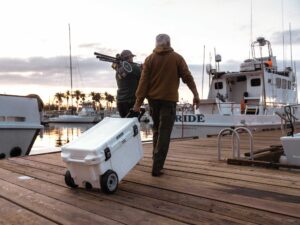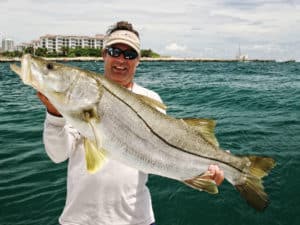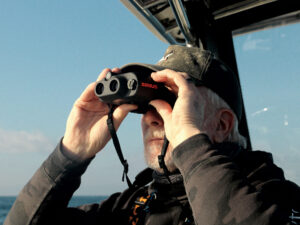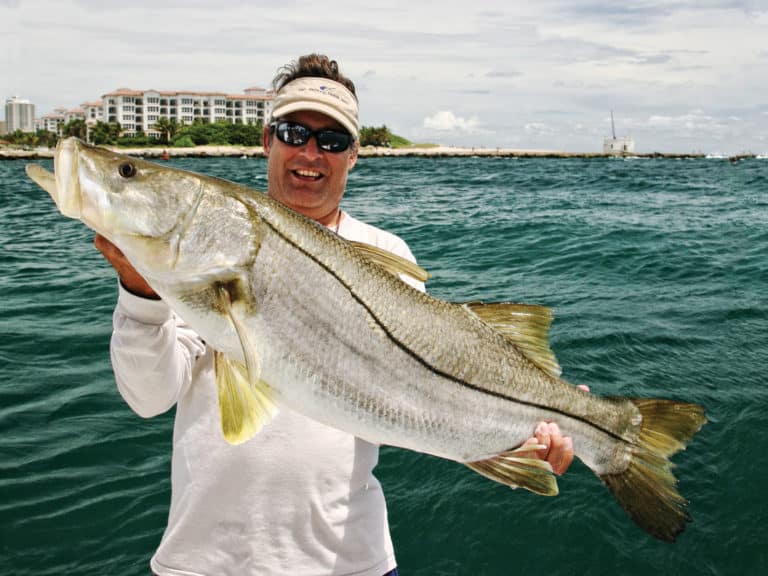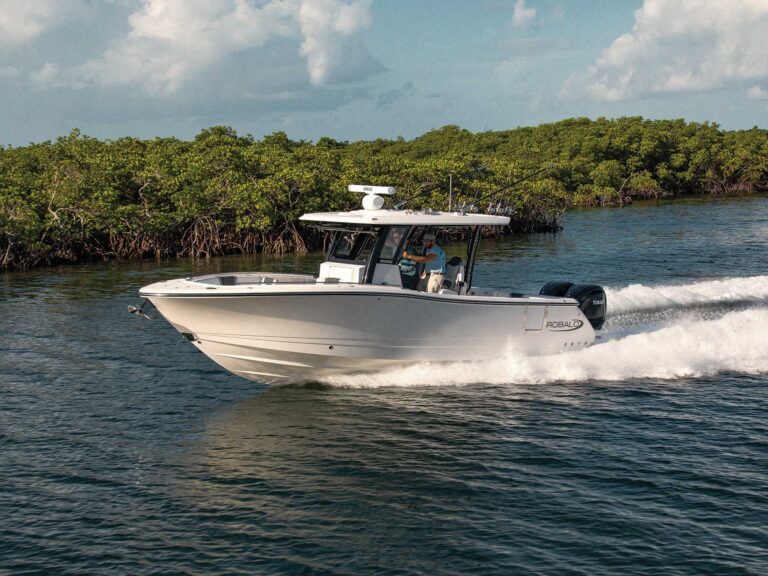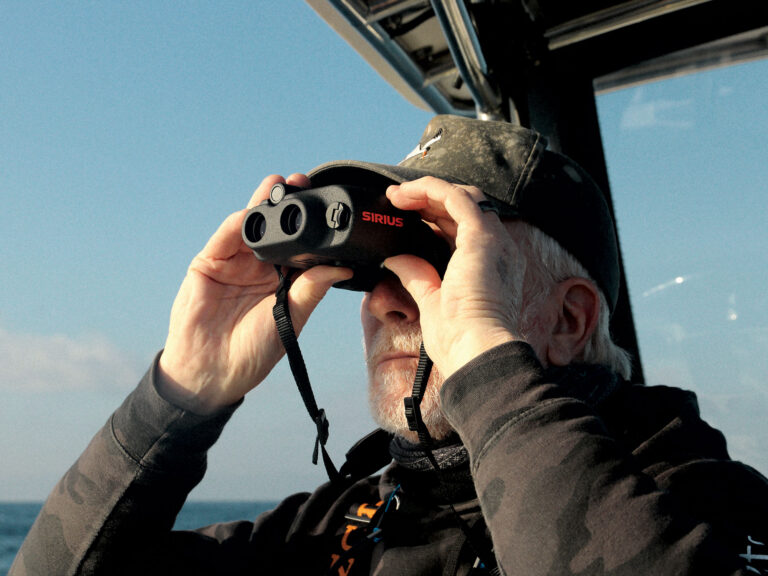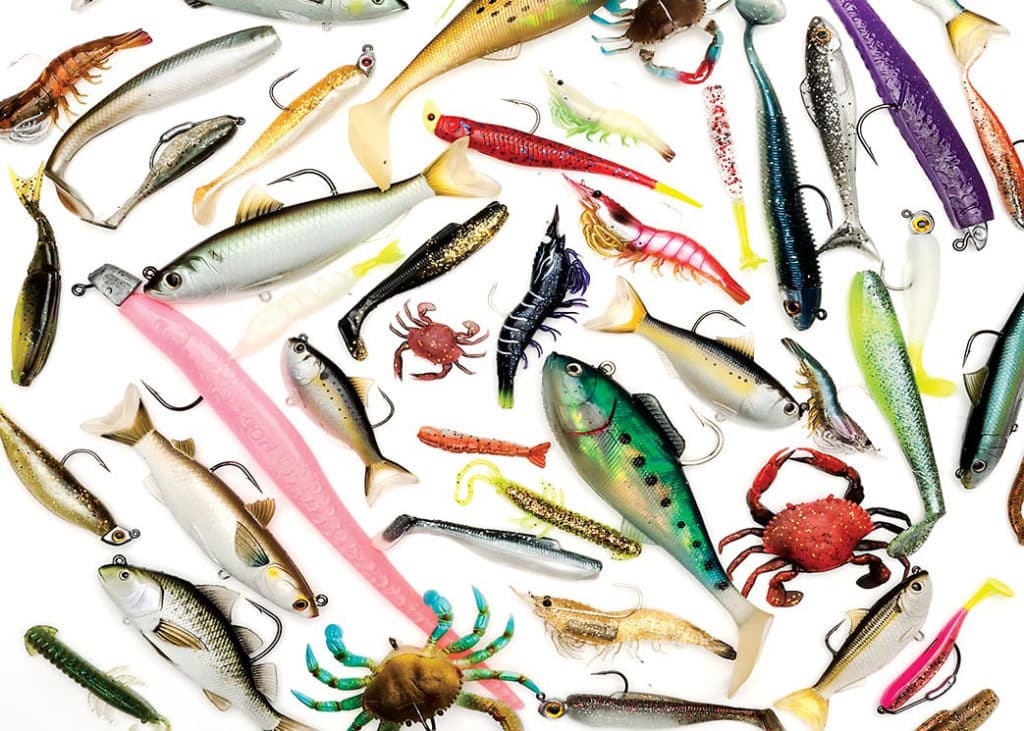
“Soft plastics work every time striped bass are actively chasing bait,” said Maryland-based Capt. Pete “Walleye” Dahlberg. No matter how ravenous the feeding blitz, however, the Chesapeake Bay light-tackle lure-fishing authority quickly added that plenty of know-how is still required to trick them — and other inshore game fish — into eating plastic.
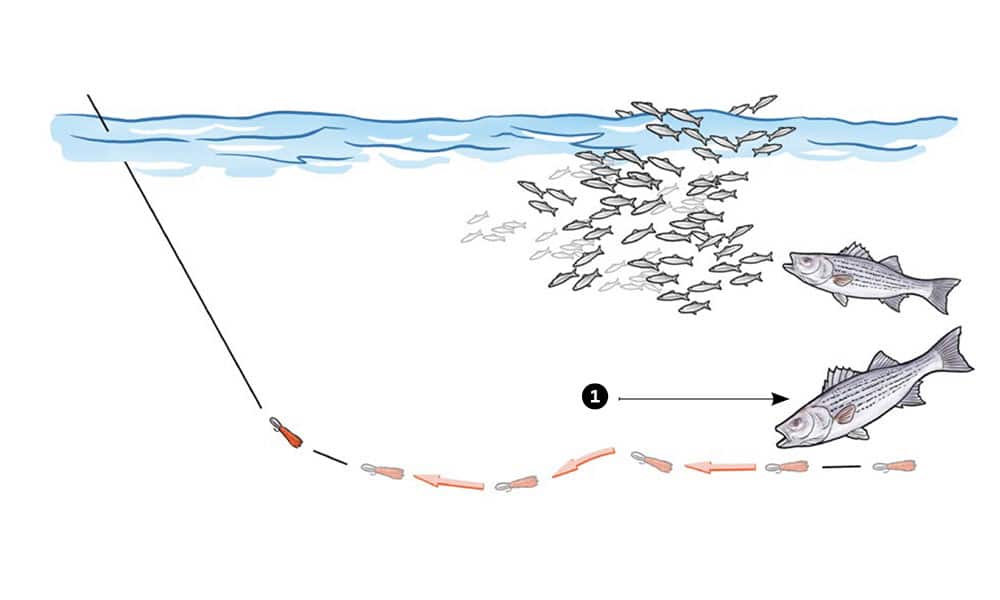
Lead or Follow
Scoring with soft baits depends 10 percent on lure selection and 90 percent on angler skill; the person on the rod is responsible for breathing life into a simple piece of plastic to evoke strikes.
For surface foraging stripers, Pete Dahlberg goes erratic. “Short, sharp twitches make the lure stand out in bait schools being preyed upon,” Dahlberg says. “It appears as if it’s frantically trying to keep up with the main group. Striped bass simply devour it.”
Southern California’s Capt. Benny Florentino shares a similar approach for calico bass. “It’s about mimicking the baitfish,” he says. “If a baitfish isn’t swimming crazily, it’s not afraid. So, our soft plastics must move with purpose and appear panicked. We also strive to fish them near, but not within, large bait schools, where calicos easily single them out.”
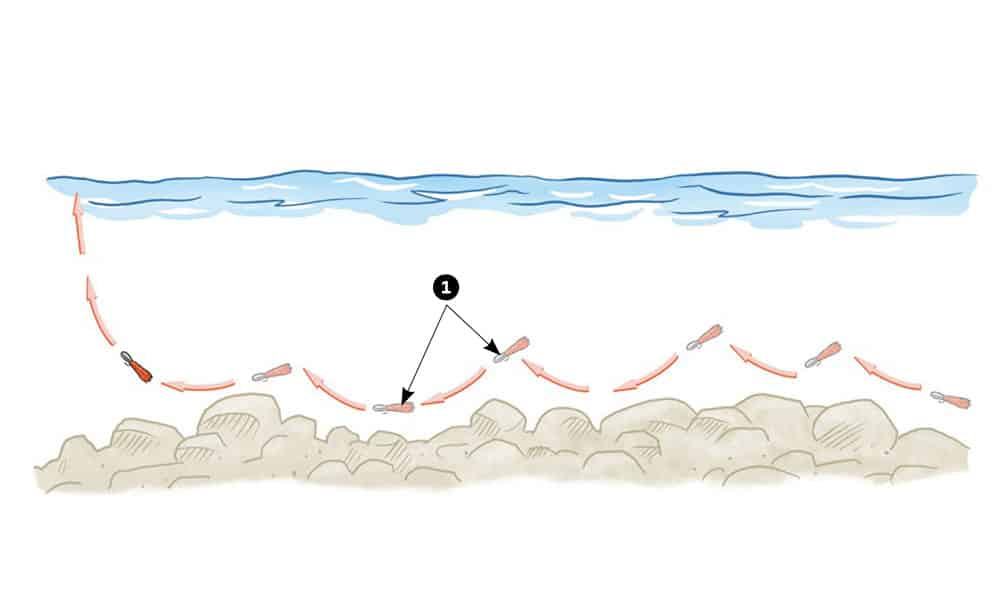
For bottom-holding fish, Dahlberg and Florentino curtail retrieval pace. “If we’re marking striped bass over oyster shells in 20 feet of water, they’re now dialing in on small crabs, May worms and the likes,” Dahlberg says.
“I select the lightest jig head that’ll take my soft plastic down to them, cast, close the bail, and reel up just enough line to stay taut to my lure. As the soft plastic sinks, I’ll soften its landing, feel the environment it’s working through, and detect any subtle strikes. The gentle landing mimics bottom forage scurrying about; it’s a more natural sound to bottom feeding stripers. I’ll keep a taut line and twitch the lure in 2- and 3-foot increments.”
Read Next: Nuances in Jig Selection and Jigging Techniques
When searching for halibut and calico and spotted bay bass around rocks and docks in Long Beach and L.A. harbors, Florentino makes a long cast and begins a slow-paced retrieve, dropping and lifting the rod. “It’s low and slow,” Florentino says, “much like a crab or shrimp.” However, when fishing grass flats, he’ll imitate an anchovy or smelt with a steady, straight and slow retrieve right above bottom.
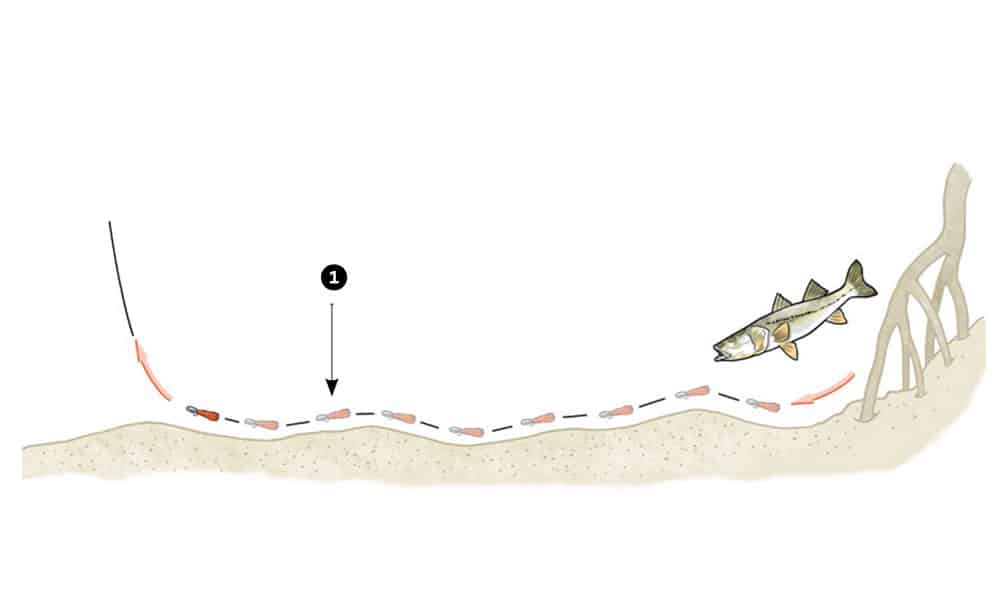
One Inch at a Time
Capt. Jim Willcox is a wizard at catching snook, tarpon, redfish and seatrout in the Florida Keys backcountry. “I tell clients not to be afraid of working a soft plastic too slowly,” Willcox says. “During our winter cold snaps and hot summer days, fish become sluggish. It’s different in the morning and evening, but for most of the day, they’re lazy. Therefore, the bait has to remain in that lazy zone longer.”
After a long cast, Willcox lets his lure settle, aims the rod tip at the water, and then drags it along bottom. “I may twitch it an inch or so occasionally,” Willcox says. “The angler’s job is to keep in touch with the lure, and detect its motion and any soft strikes. In short, he needs to pay attention.”
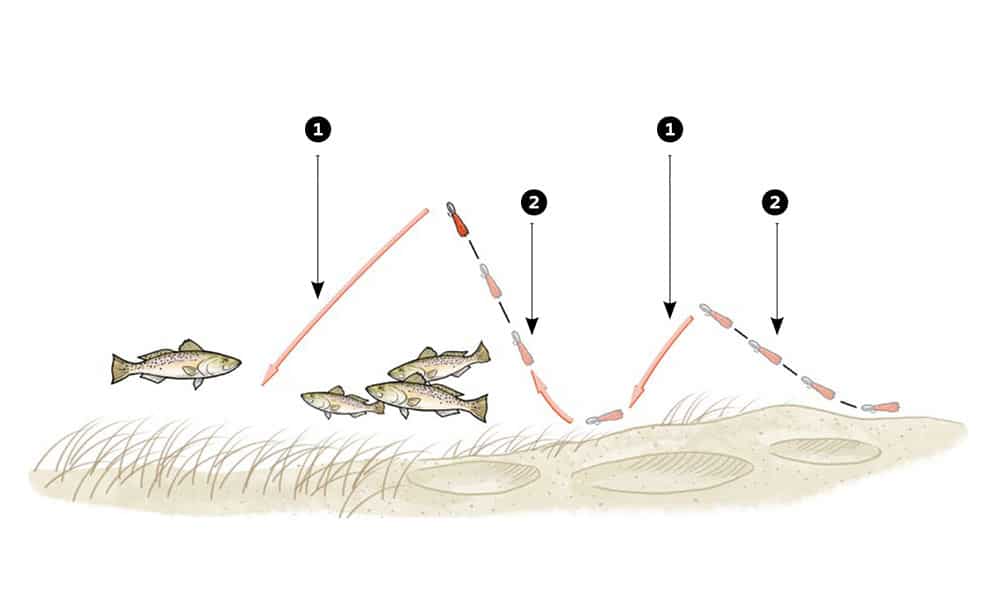
[2] 3-count lift
[1] 3-count drop
[2] 3-count lift Salt Water Sportsman
3-by-3 Retrieve
Chris Vecsey excels at fishing Alabama’s coastal waters. “The beauty of fishing soft plastics is they can be rigged to do anything,” Vecsey says. He concurs that speed is often a disadvantage. “We have such variety here, it dictates how a soft plastic is retrieved,” he adds. “Anglers seeking redfish and trout will instead catch ladyfish, mackerel and bluefish if they retrieve their lures too quickly.”
Read Next: Fall Fishing for Redfish
To consistently catch trout, redfish and flounder, Vecsey offers up his 3-by-3 retrieve technique. Over grass beds, he casts a fluke-style soft plastic, lets it sink, twitches the bait three times, then lets it fall for three seconds. He just repeats that action, all the way back to the boat. “The three twitches and the three-second falls hold the retrieval speed to a minimum, keeping the lure right above bottom, where redfish, trout and flounder roam,” he says.
Color Me a Fish
Vecsey’s color selection hinges on whether he’s fishing clear water off Orange Beach or the mud-hued water around Gulf Shores. For the latter, he selects lighter lure colors, some with chartreuse, some with fleck, as well as smoke and even black, creating visible silhouettes for game fish to key on. In clear water, he favors more neutral hues, such as watermelon.
“People freak out whenever a tackle shop is out of their favorite color,” he says. “Switch it up occasionally. The fish get tired of seeing the same color lures too.”
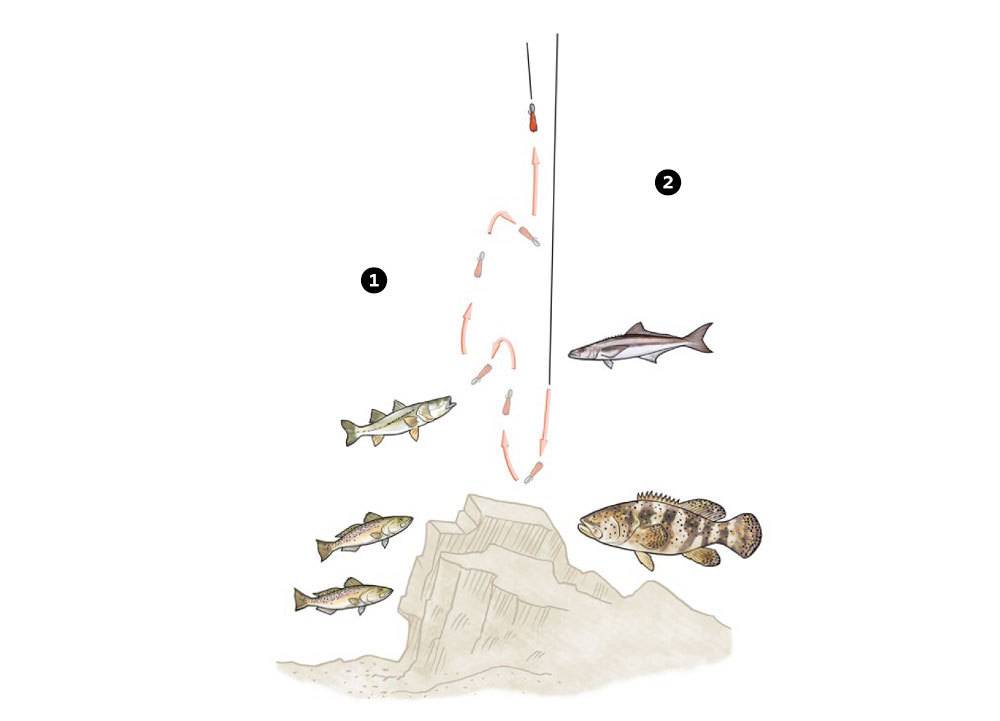
[2] Drop straight to the bottom beneath you Salt Water Sportsman
Rig Right
After matching a soft plastic to the appropriate jig head, select the lightest leader you can get away with. Leader diameter often dictates strikes, or lack thereof. For pulling snook out of mangroves, 40-pound fluorocarbon is a good compromise between stealth and strength. For redfish and seatrout, it’s 30- and 20-pound-test, respectively.
If strikes are slow in coming, drop down in leader size. Also, attach the lure to the line with a loop knot, which allows maximum action.
Read Next: Rig a Weedless Plastic Bait
Long casts in shallow water negate the presence of the boat, but when the sonar reveals structure or fish below, try dropping the soft plastic straight down and work it vertical-jigging style. After a series of long and fruitful casts near structure in only 10 feet of water, Willcox and I did just that during a recent trip and scored even more fish, including cobia.
You’re the one responsible for making these colorful baitfish and crustacean replicas come to life. Take a page from the book of these seasoned pros and you’ll be amazed at just how productive soft plastics can be. Who needs live bait?
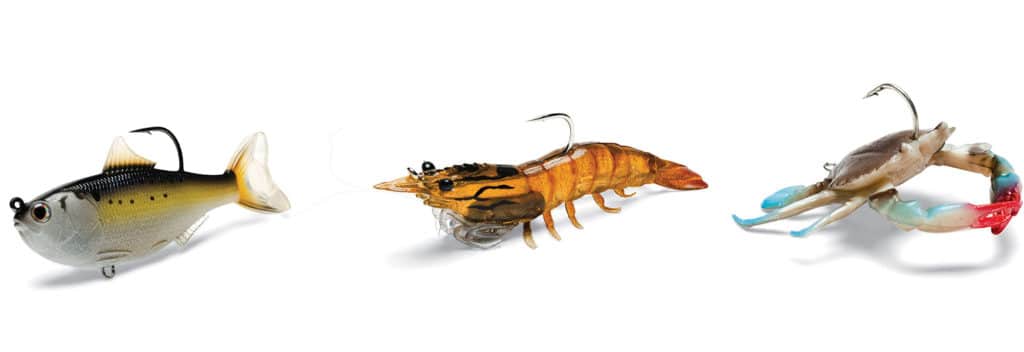
Pick Right
The soft plastic should resemble the most abundant forage. When shrimp are running, choose a replica of similar size and color. If pilchards, anchovies or herring are abundant, pick a lure that mimics the baitfish.
Noise Factor
Adding a popping float a few feet above a soft plastic holds the bait at a predetermined depth and creates noise, drawing in fish. Once they see the lure dangling beneath the float, they’ll often buy into the illusion and strike the lure.
Good Vibrations
Paddle-style tails lend swimming action and vibration that game fish can detect, a desired advantage in waters with low visibility.
Saltwater Drifters
When shrimp or baitfish are swept through constrictions by the tide, pick a soft plastic with the appropriate shape and color, rig it with a light jig head, and cast up-current. Maintain a semitaut line as the lure drifts so it travels at the same rate of speed as the natural forage.
Smells Like Lunch
Many anglers discount scents, claiming success depends solely on sizing the lure for the task at hand and dialing in its action. But scented plastics mask human scents and add enticement when visibility is limited.

